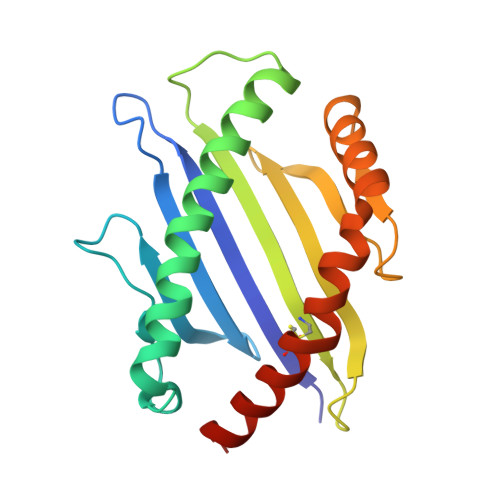Peptide Centric V beta Specific Germline Contacts Shape a Specialist T Cell Response.
Wang, Y., Tsitsiklis, A., Devoe, S., Gao, W., Chu, H.H., Zhang, Y., Li, W., Wong, W.K., Deane, C.M., Neau, D., Slansky, J.E., Thomas, P.G., Robey, E.A., Dai, S.(2022) Front Immunol 13: 847092-847092
- PubMed: 35967379
- DOI: https://doi.org/10.3389/fimmu.2022.847092
- Primary Citation of Related Structures:
8D5N, 8D5P, 8D5Q - PubMed Abstract:
Certain CD8 T cell responses are particularly effective at controlling infection, as exemplified by elite control of HIV in individuals harboring HLA-B57. To understand the structural features that contribute to CD8 T cell elite control, we focused on a strongly protective CD8 T cell response directed against a parasite-derived peptide (HF10) presented by an atypical MHC-I molecule, H-2Ld. This response exhibits a focused TCR repertoire dominated by Vβ2, and a representative TCR (TG6) in complex with Ld-HF10 reveals an unusual structure in which both MHC and TCR contribute extensively to peptide specificity, along with a parallel footprint of TCR on its pMHC ligand. The parallel footprint is a common feature of Vβ2-containing TCRs and correlates with an unusual Vα-Vβ interface, CDR loop conformations, and Vβ2-specific germline contacts with peptides. Vβ2 and Ld may represent "specialist" components for antigen recognition that allows for particularly strong and focused T cell responses.
Organizational Affiliation:
Department of Pharmaceutical Sciences, University of Colorado School of Pharmacy, Aurora, CO, United States.



















